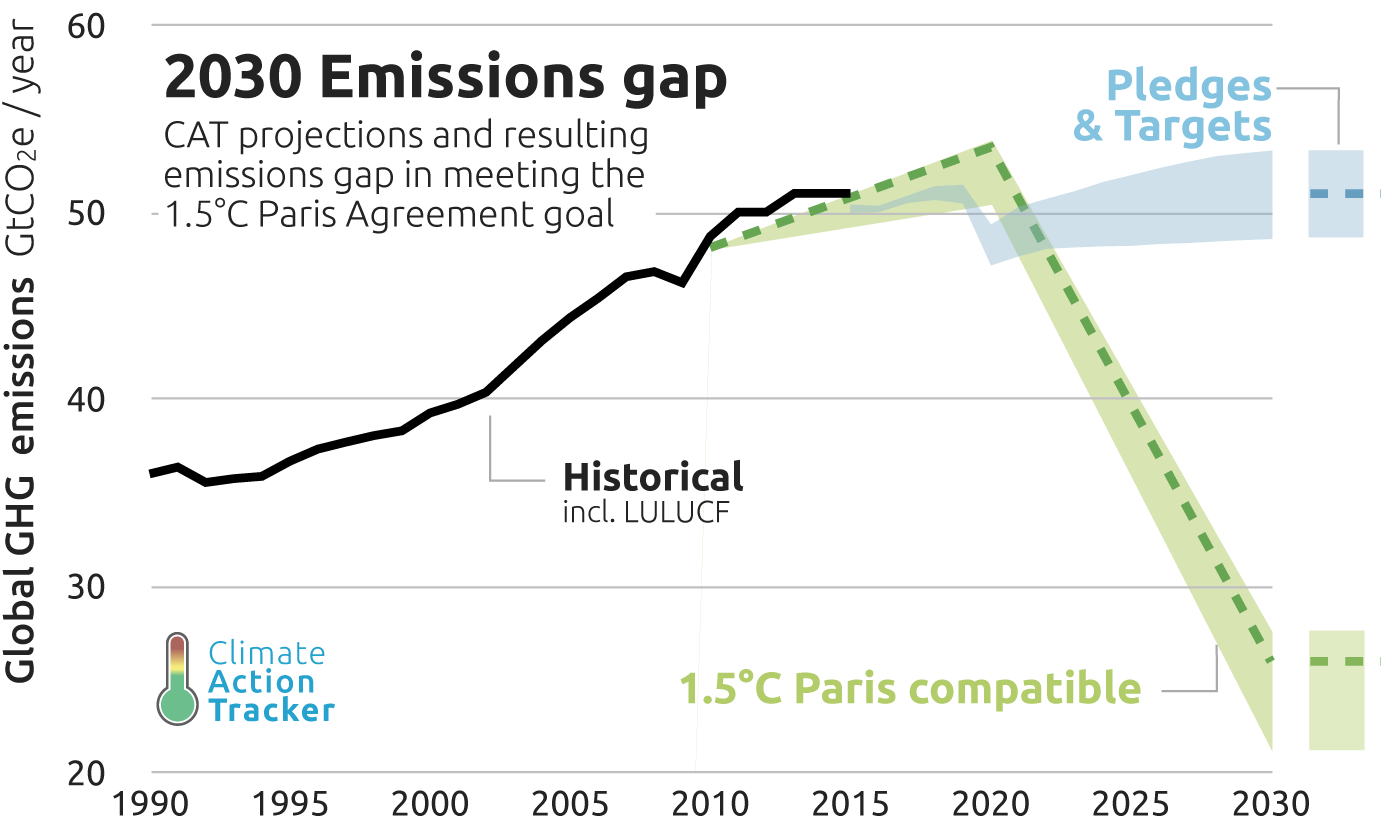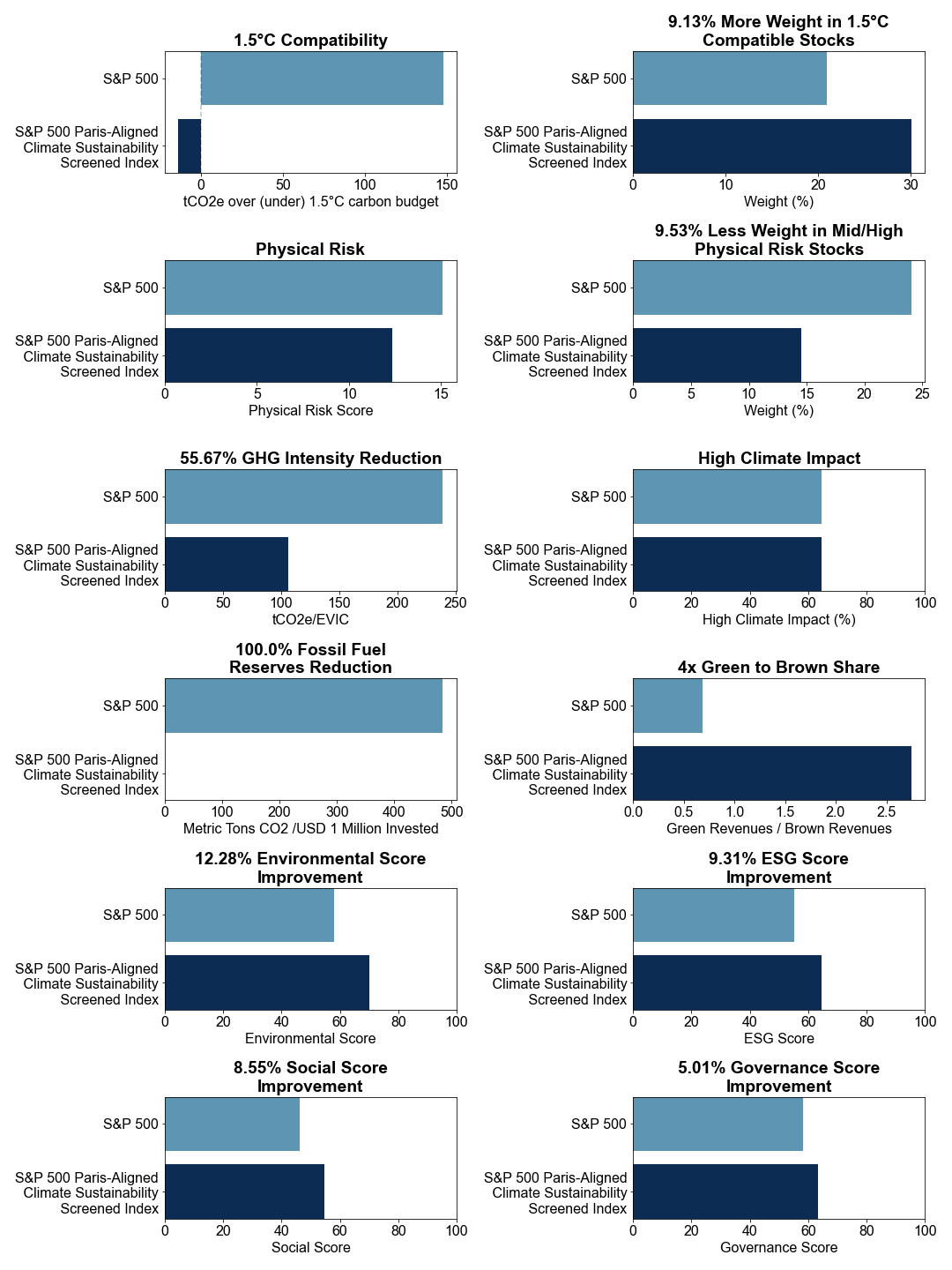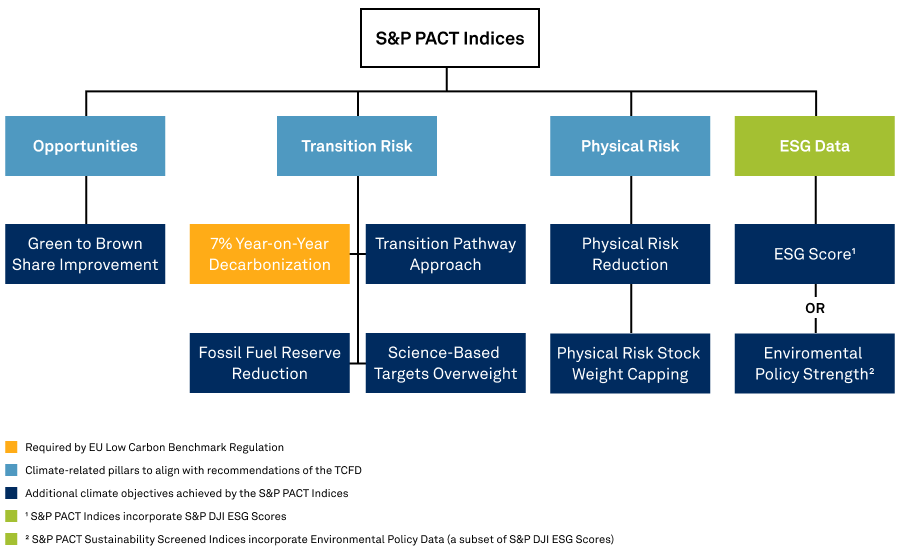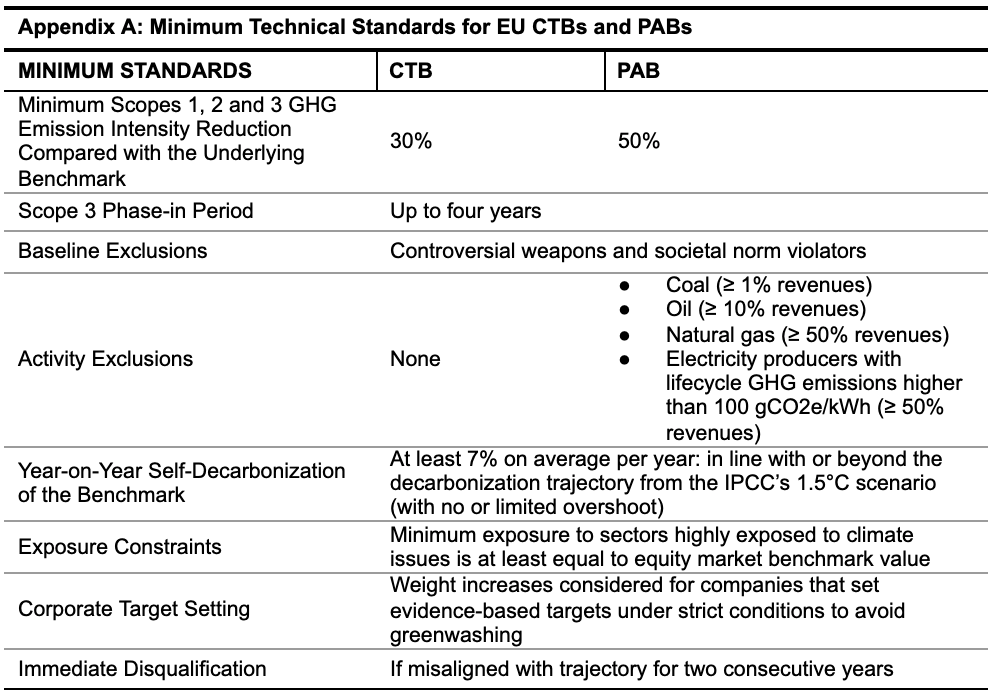This is the first blog in a four-part series looking at index innovation for net zero.
The landmark Paris Agreement marked a sea change in the global fight against climate change. More than 190 countries are now committed to limiting global temperature rise and offsetting humanity’s contribution to it, hopefully before it’s too late. Unfortunately, the current pledges and policies go nowhere near enough (See Exhibit 1). Achieving net zero emissions by 2050 will require far more collective power than policymakers alone can provide. However, a combination of groundbreaking new datasets and index innovation is emerging, enabling investors to play an expanded part in achieving the goals of the Paris Agreement. Cutting-edge developments in our Paris Alignment, Physical Risk and Scope 3 Emissions data, for example – as well as the pioneering S&P PACT Indices1 built upon them – provide investors with a choice: to align their portfolios with a scenario that may mitigate the most catastrophic climate impacts and, at once, embark on their journeys towards a net zero economy.
Exhibit 1: Emissions and Warming Predictions Based on Current Policies & Pledges

Source: Climate Action Tracker. Data as of May 2021. For illustrative purposes only.
How Do the S&P PACT Indices Align with a Net Zero Scenario?
Though governments alone cannot decarbonize the economy across multiple sectors, they can certainly set the policy agenda, establish a common blueprint and devise a system of incentives to help channel private investment to the right places. Indeed, the European Commission is doing just that. In March 2018, it published its sustainable finance action plan for reorienting capital flows towards a more sustainable economy, a major cornerstone of which is the EU Low Carbon Benchmark Regulation. This defines minimum technical standards for climate benchmark labels,2 including Paris-Aligned Benchmarks (PABs) that explicitly seek to align with a 1.5°C trajectory (consistent with achieving net zero emissions by 2050). Simply put, any index that adheres to these standards may be marketed as a PAB within the EU and can appropriately be viewed as a net zero investment tool.
By meeting these standards, and then some, the S&P PACT Indices provide a holistic, climate-aligned strategy that not only bestows upon itself a rightful claim to the EU PAB label, but additionally aligns with recommendations of the TCFD vis-à-vis a combination of transition risks, physical risks and opportunities arising from climate change. As shown in Exhibit 2, the methodology comprises eight climate objectives.3 Of these, just one stems from the requirements of the PAB label, which is the initial 50% reduction in relative greenhouse gas (GHG) emission intensity, followed by a 7% year-on-year self-decarbonization of the index to align with carbon neutrality (i.e., net zero) by 2050, using Scopes 1, 2 and 3 emissions.4
Exhibit 2: S&P PACT Index Methodology Inputs

Source: S&P Dow Jones Indices LLC. For illustrative purposes only.
The remaining seven inputs address additional climate objectives achieved by the index methodology:
-
1.5°C compatibility on a forward-looking basis at every rebalance, built on transition pathway models with S&P Trucost’s Paris Alignment Dataset.
-
Decreased exposure to fossil fuel reserves to reduce the risk of owning stranded assets from the transition.
-
Improved environmental policy strength, measured by the environmental dimension of S&P Global ESG Scores.
-
A combined 20% index overweight awarded to companies with publicly disclosed science-based targets that meet best practice standards.
-
At least four times the green-to-brown revenue share than the underlying benchmark.
-
Dynamically capped individual company exposure to acute climate hazards (e.g., storms and floods), using S&P Global Trucost’s leading Physical Risk Dataset.
-
Reduced weighted average physical climate risk exposure of the index overall, to mitigate the long-term effects of chronic physical climate impacts (e.g., sea level rise), using the same data.
All the above climate objectives are simultaneously met through an optimization that seeks to minimize deviations from the underlying benchmark in terms of active share. The result is a broad and diversified suite of indices that align with a 1.5°C scenario, while offering numerous additional benefits (See Exhibit 3). Together, the S&P PACT Indices and the innovative datasets that support them present a formidable investor toolkit to facilitate the much-needed transition towards net zero by 2050.
Exhibit 3: ESG Exposures of S&P Paris-Aligned Indices

Source: S&P Dow Jones Indices LLC, S&P Global Trucost, S&P Global Corporate Sustainability Assessment (CSA), and FactSet. Data as of March 31, 2021. For illustrative purposes only.
The next blog,"Let’s Get Physical” With S&P Trucost’s Physical Climate Risk Data, looks at how technological advances are paving the way for granular assessments of physical risk exposure built upon climate scenario models, asset-level data and geolocation specificity of assets.
Appendix

Source: S&P Dow Jones Indices LLC, The EU Technical Expert Group on Sustainable Finance. For illustrative purposes only.
1PACT= Paris Agreement Capital Transition Assessment; link to official methodology: www.spglobal.com/spdji/en/documents/methodologies/methodology-sp-paris-aligned-climate-transition-pact-indices.pdf.
2The two new climate benchmark labels include Climate Transition Benchmarks (CTBs) and Paris-Aligned Benchmarks (PABs), each consisting of minimum technical standards and regulatory requirements that benchmark administrators must comply with to be able to market climate benchmarks within the EU. Please see Appendix A for a table summarizing the minimum requirements.
3There are two variants of the S&P PACT Indicies: (i) A standard methodology that first screens out companies involved in controversial weapons,* tobacco,* small arms, military contracting, thermal coal, oil sands, gambling, alcohol, fossil fuel operations and highly intensive power generation as well as companies involved in public controversies, and violators of the Principles of the UN Global Compact to determine the eligible universe; and, (ii) A Sustainability Screened variant that is more inclusive, removing companies involved in controversial weapons, tobacco small arms, tobacco, oil sands and shale energy. These two variations also incorporate varying degrees of ESG or Environmental Data, as shown in Exhibit 2. *Represents for Climate Transition Indices only.
4The GHG Protocol classifies a company’s GHG emissions into three scopes. Scope 1 emissions are direct emissions from owned or controlled sources. Scope 2 emissions are indirect emissions from the generation of purchased energy. Scope 3 emissions are all indirect emissions (not included in Scope 2) that occur in the company’s value chain, including both upstream and downstream emissions. The EU benchmark regulation only requires Scope 3 emissions to be phased in within four years, but the S&P PACT Index methodology incorporates all GHG Scopes 1, 2 and 3 from inception, using cutting-edge datasets developed by S&P Global Trucost.
Learn more about how "The Quality Imperative" differentiates our essential sustainability intelligence.
READ MORE >-
Discover multiple layers of ESG insight.
Learn more -
Get comprehensive company analytics and best practice reporting solutions.
Learn more -
Optimize the climate, ESG and impact performance of your investment portfolio.
Learn more
We’re here to help you accelerate your sustainability journey. Get connected with an ESG specialist who can advise you on your next steps.
Talk To An Expert


